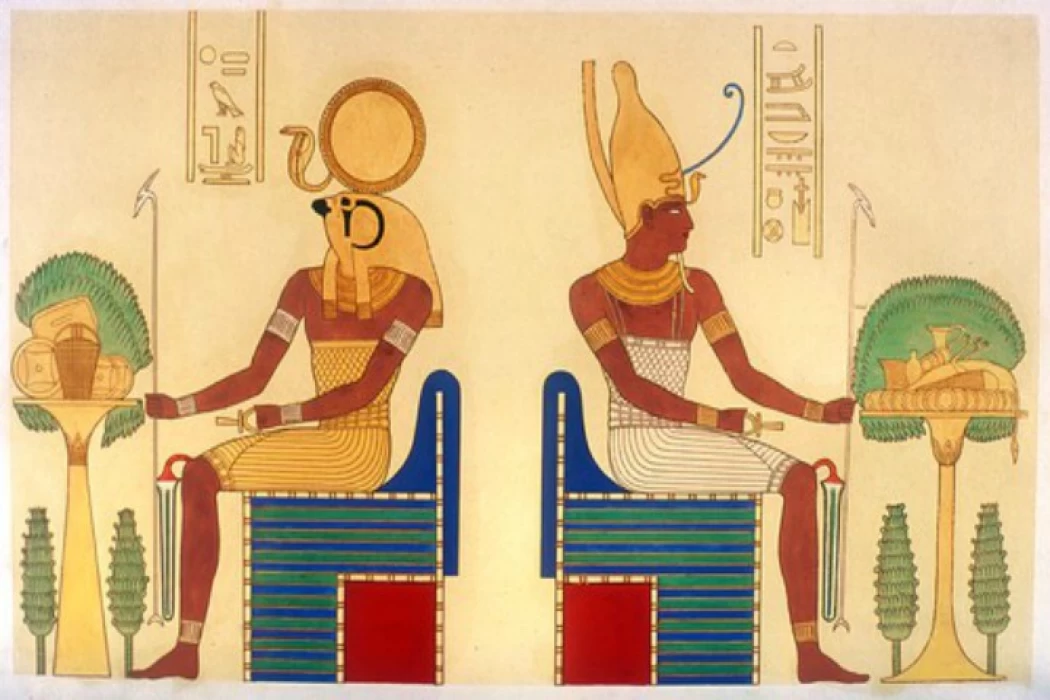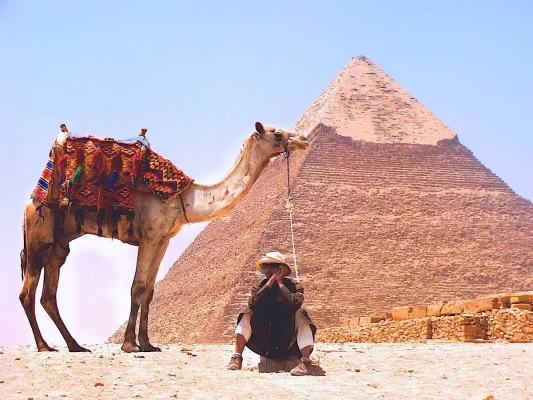
God Atum
Details about God Atum
The god Atom, one of the ancient Egyptian gods, had blue hairs of lazuli, clad in his head when he created himself on top of the Ezli Hill. According to ancient Egyptian mythology, Atom, and the meaning of his full or complete name, created the world.
Afterwards, the blue appeared the hair color of many gods, such as the goddess Amnent, the protector of the dead, the goddess Isis, who guides the dead during the other life, the God of Tawah, the Lord of Industries and the Arts, the God of the Earth, and then the blue color of heaven and water, because in the cosmic sense of life and fertility, blue is naturally the symbol of the Nile and its associated crops.
Because of his divinity, the ancient Egyptians believed that this color would pay them hard luck and protect against the evil of envy, It brings reassurance and peace of mind, and so blue became associated in ancient Egypt with divinity, He bears a character of holiness that has only grown stronger over the ages for other reasons. So the ancient Egyptians tried to move color from a mere colour in nature to a dye material used in their daily lives.
The name "Atom" refers to perfection, meaning "complete/complete", where the ancient Egyptians believed that he had created himself from himself on top of the Eternal Hill, and was thus the creator of the world, and had merged with God Ra and was known as "Atom Ra".
In the first part of the encyclopedia "Ancient Egypt", entitled "In the prehistoric era to the end of the humane era", it was "Atom" or "Done", which is represented in the form of an animal similar to the current "Pharaoh Fugitive"; Because, as the myths said, he was swallowing the snake that wanted to swoop on Atom and swallow it at sunset.
The fact that this animal appears only at sunset and robs the snakes; He also represented Atom as a crowned man with King's badges; That's because they thought he was the king of the gods. When they represented "Ra", the sun god, they saw the red disk of the sun swimming in the sky in his ship.
God Atum is one of the nine main deities of the Egyptian city of Heliopolis, and one of the most important Egyptian gods in this mythology. Because he is the creator of the universe, Atum is also known as Atem, Items, Atum-Ra, or Tem.
In Egyptian mythology, his origin is described as the emergence of a god from the primordial ocean. Existing before creation, Atum was the one who would initiate creation, as he gave life to his two sons, Shu and Tefnut, who were the gods of air and moisture, respectively.
The ancient Egyptians depicted him as a bearded man wearing a double crown. Atum was the first Egyptian deity to be depicted in human form, as he replaced Imy-Uaf, a serpent god. After this, Atum began his work of creation.
When depicted as a sun god, he wore the head of a ram, a phoenix, or a mongoose; on other occasions, he was depicted as a serpent, emerging from the primordial waters and renewing himself daily.
Also considered a sun god, he was linked to the god Amun Ra, who was the sun god. Atum represented the evening sun. Along with Ra and Khepri, they formed the triad of sun gods, Ra representing the god of midday and Khepri representing the sun goddess of dawn.
His role as a creator god connects him to all the gods, since, according to mythology, he was the one who initiated the creation of all the gods, including the rest of the Egyptian gods. From their children, Shu and Tefnut, Geb and Nut, the gods of the earth and sky, were born.
In turn, from the union of Geb and Nut, were born the other gods who would complete the ennead of Heliopolis, among them Isis, Nephthys, Osiris, Seth and Horus.
The name Atum means complete or perfect, and the ancient Egyptians believed that he created himself from himself on the top of the eternal hill, and who is the creator of the world, and he merged with the god Ra and was known as Atum Ra. The seat of his worship was in Ain Shams in the thirteenth district.
The importance of Atum and his relationship with the king continued throughout ancient history, as confirmed by texts from a papyrus dating back to the late period, currently preserved in the Brooklyn Museum... This papyrus refers to the importance of the god and his role in the festival marking the beginning of the year, which reaffirms the role of the king.
Atum, the creator god, was the ultimate source of royal power and authority, which was transferred to the deity Horus, the king... The title "Father of the King of Egypt" was bestowed upon Atum. The Book of the Dead's Chapter 148 describes the deceased's wish to remain near Atum in order to get power from him (and become strong in Atum's presence). In later times, some amulets in the shape of a lizard were hung around the neck as symbols of this deity.















